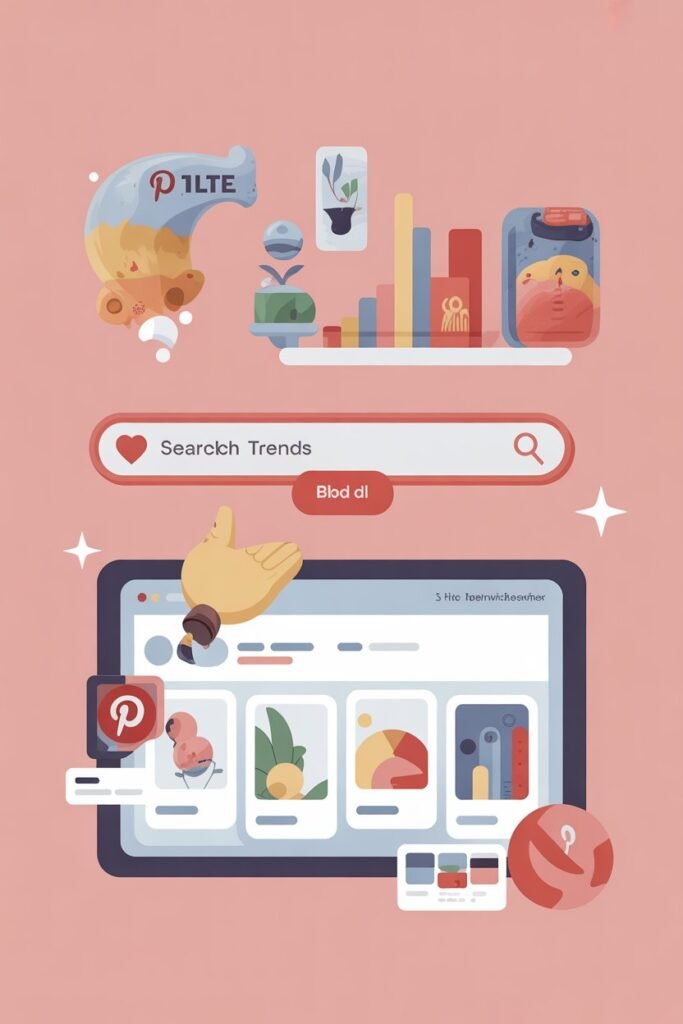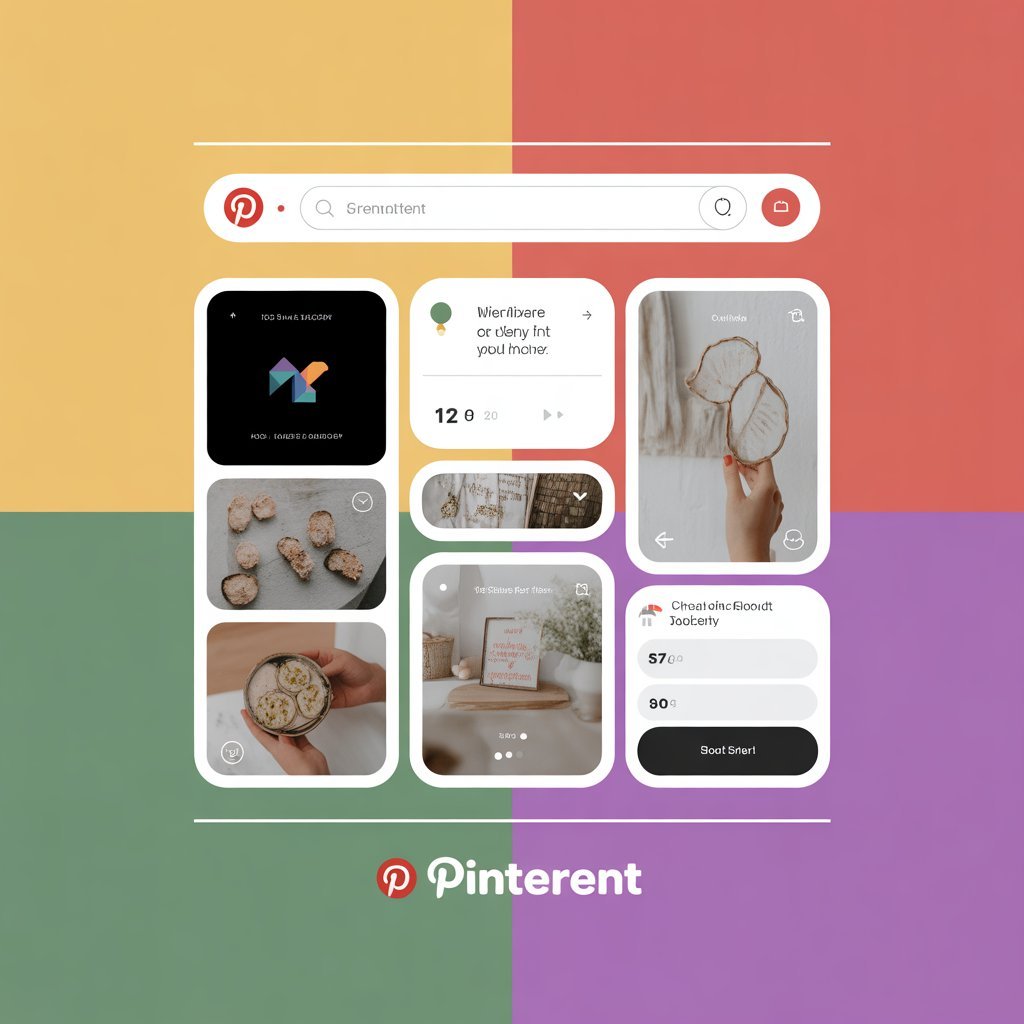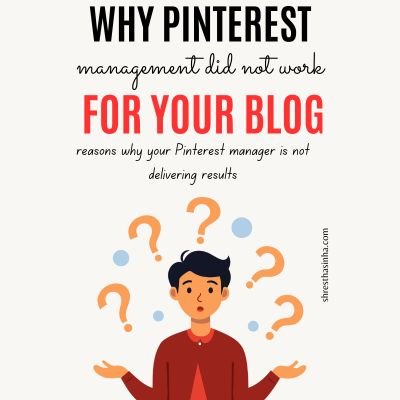How Pinterest Search Trends Can Be a Goldmine for Your Blog and Business
When I first started using Pinterest seriously, I didn’t realize how powerful it could be. At first, I thought it was just a place for pretty pictures, recipes, or craft ideas.
But over time, I discovered something that completely changed how I use Pinterest: Pinterest Search Trends.
Honestly, this tool is like a goldmine. It helps you understand what people are searching for, plan your content ahead of time, and even predict seasonal trends.

I want to share exactly how I use it and why it has become one of the most important parts of my Pinterest strategy.
1. Plan Ahead for Seasonal Trends
One of the first things I noticed about Pinterest Search Trends is that it allows you to see seasonal trends months in advance. For example, people start searching for Christmas gift ideas or holiday recipes as early as September.
That might feel too early, but if you plan your pins and blog posts ahead of time, you’ll have a huge advantage.
I started using this approach, and it completely changed how I prepare content. Instead of rushing to create pins during the holiday season, I create and schedule them months earlier.
By the time the season hits, my pins are already ranking, getting impressions, and driving traffic. It’s a proactive way to stay ahead of the competition and make sure you’re ready when people are actually searching.

Even outside of big holidays, seasonal trends exist for nearly every niche. For example, “summer salads” start trending in spring, “fall soups” start trending in August, and “New Year goals” start trending in November. Watching these trends has helped me time my content perfectly.
2. Compare Keywords to Estimate Traffic Potential
Another feature I use all the time is comparing keywords. Let me explain why this is so important. Say you have a blog post that already gets decent traffic from Pinterest.
You can use Pinterest Search Trends to see how other keywords in your niche compare to that one in terms of search interest.
This is huge because it lets you estimate relative traffic. Instead of guessing which keywords are worth your effort, you can actually see which ones have higher potential and target them first.

For example, if “vegetarian pizza recipes” gets more interest than “homemade pizza dough,” you know which topic is likely to bring more visitors to your blog.
By comparing keywords, I can also decide whether it’s worth creating a new pin or blog post. It saves a lot of time and effort, especially if you’re managing multiple pins or a full blog content calendar.
3. Find Related Keywords and Ideas
One of my favorite things about Pinterest Search Trends is that it doesn’t just show the main keyword—it gives related keywords too. This is a goldmine for content ideas.
For example, if I search for “pizza recipes,” Pinterest might show related searches like “healthy pizza,” “vegetarian pizza recipes,” or “quick dinner pizzas.”
These related keywords give me ideas for new blog posts, pins, and even social media content.
The best part is that sometimes these related keywords are less competitive but still bring traffic. I’ve found that targeting these smaller keywords can be just as effective as the big ones, especially if I combine them with seasonal trends.
4. Spot Trending Topics in Your Niche
Every niche has topics that suddenly become popular. Pinterest Search Trends makes it easy to see which topics are trending right now.
I use this information to jump on trends before they peak, giving my content a chance to be noticed while interest is growing.

For example, one year I noticed “fall soup recipes” starting to trend in August. I quickly created pins and blog posts around it.
By the time September arrived, my content was already ranking and getting clicks, while others who waited were just starting to post.
This strategy has helped me grow my traffic faster and reach more people in my niche. Pinterest rewards early action, and using trends is one of the best ways to take advantage of that.
5. Discover Content Gaps and Opportunities
Another reason I love Pinterest Search Trends is that it helps me spot content gaps. Sometimes, people are searching for a topic, but there isn’t much good content available. That’s my opportunity.
I create content that fills those gaps, and Pinterest usually rewards fresh, useful pins. These types of pins often get more impressions and clicks because they solve a problem that hasn’t been addressed yet.
For example, if people are searching for “quick weeknight dinners” and there aren’t many detailed, easy-to-follow recipes, I can create a pin with step-by-step instructions. Filling these gaps has helped me stand out in my niche.
6. Understand Your Audience
Pinterest Search Trends also gives me insight into what my audience wants and when they want it.
For example, people start searching for “summer outfits” months before summer begins. If I know this, I can create content and schedule pins ahead of time so my audience sees it at exactly the right moment.
Understanding my audience’s behavior has made a big difference. It’s not just about creating content—it’s about giving people what they need when they’re ready to engage. That’s how you start building trust and growing a loyal audience.
7. Combine Evergreen and Trending Content
One of the smartest things I’ve learned is to combine evergreen content with trending content. Evergreen content is content that always performs well over time, like “how to make pizza dough” or “easy home organization tips.”

Trending content, on the other hand, gives quick spikes of traffic, like “Halloween costumes for toddlers” or “fall soup recipes.”
Pinterest Search Trends helps me figure out which content to create for both purposes. I can see which topics are consistently searched year after year, and which ones are gaining attention right now. That way, my content strategy is balanced and effective.
Summary of How I Use Pinterest Search Trends Every Day
Here’s how I use Pinterest Search Trends in my workflow:
- Check seasonal trends months in advance. I plan pins for holidays, seasons, or yearly events so my content is ready.
- Compare keywords. I see which keywords have the most potential to bring traffic.
- Look for related keywords. I find smaller, less competitive opportunities to create content.
- Spot trending topics. I create content around hot topics before they peak.
- Find content gaps. I fill in areas where there’s demand but little quality content.
- Understand my audience. I know what they’re looking for and when.
- Mix evergreen and trending content. I make sure my account has both consistent and timely traffic.
This approach has helped me grow my Pinterest account and my blog traffic steadily over time. It’s not instant, but it’s consistent, predictable, and extremely effective.
Final Thoughts
Pinterest Search Trends isn’t just another analytics tool—it’s a roadmap. It tells me what people are searching for, what they’re interested in, and when they’re searching. Using it, I can create content that gets seen, drives traffic, and grows my audience.
If you’re serious about Pinterest, I promise you that this tool is worth your time. Start tracking seasonal trends, comparing keywords, exploring related keywords, and spotting content gaps. Once you start using Pinterest Search Trends consistently, you’ll see why I call it a goldmine.






